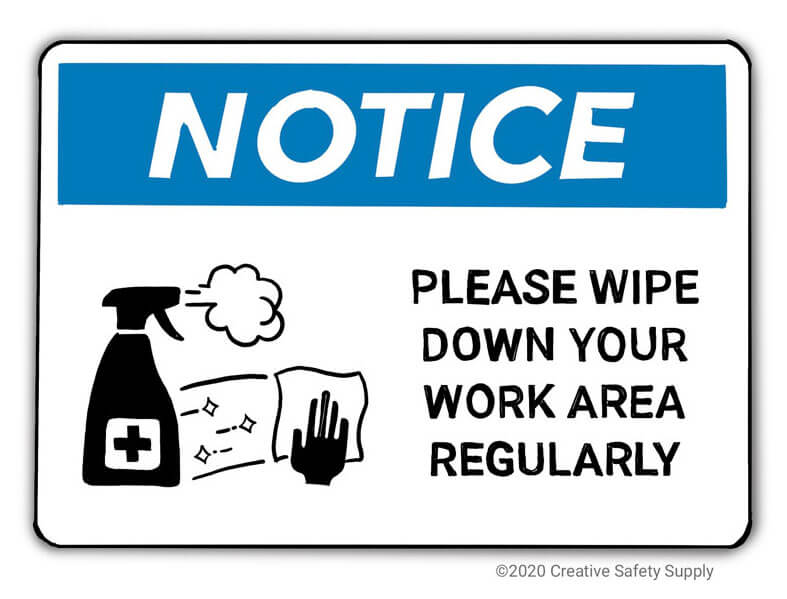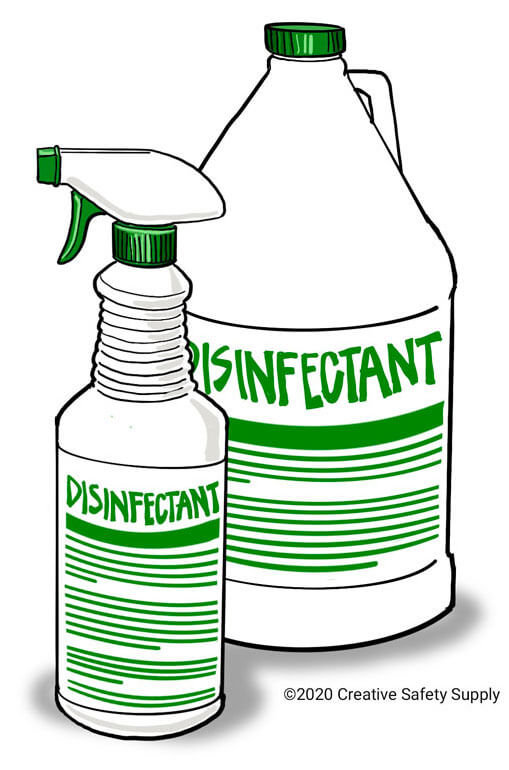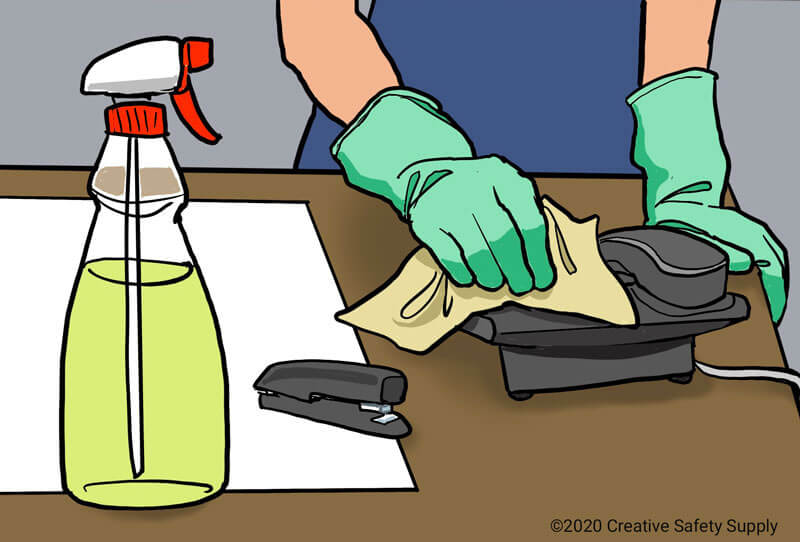
Maintaining a clean and organized workplace is an important aspect to daily operations, no matter which industry your business is in. From ensuring safety to increasing efficiency, cleanliness can have a big impact on how well workers are able to carry out their tasks. Cleaning is also crucial to health, as germs can spread quite quickly throughout the workplace—and as the world continues to adapt to the novel coronavirus pandemic, having a cleaning routine is more important than ever for your facility.
Why is a Clean Workplace Important?
It’s important to maintain cleanliness for many reasons. Whether you hire a third party vendor to thoroughly clean your office or you ask employees to organize their workspace before they leave at the end of the day, sustaining a clean workplace has a large influence, in several ways:

- It supports workers’ health. Germs spread easily in the workplace, especially in common areas such as break rooms or if workers share equipment. Routinely disinfecting shared surfaces or commonly touched objects reduces the likelihood of the spread of disease. When you take the time to clean, this supports your employees’ general health.
- It’s essential for safety. Not only are workers more safe in a clean environment that doesn’t contain germs, mold, or dust, but cleanliness reduces potential hazards. An unorganized office space can contain many fire hazards, and keeping the floors clear reduces slip and trip hazards.
- It can help boost efficiency. When workers feel comfortable at work, this influences their productivity and performance. If things are organized, they’ll spend less time looking for an item they need, and if the workplace is clean, this can help result in less sick days. Once you implement a consistent cleaning routine, you may notice that people are able to conduct their tasks much more efficiently.
Getting Your Workplace Ready for Reopening
Whether you are welcoming workers back from telecommuting or your local government has allowed your business to open its doors again, it’s essential to continue to protect workers’ health and safety. As you develop and implement your reopening plan, it’s highly recommended to establish a consistent cleaning and disinfecting routine. In OSHA’s “Guidance on Returning to Work” document, you’ll find recommendations for reopening safely with health and safety procedures that can help reduce the risk of exposure to COVID-19 in your workplace. On top of this, the Centers for Disease Control and Prevention (CDC) has extensive resources and guidelines for effectively cleaning surfaces so the spread of the coronavirus and other illnesses is minimized.
Disinfecting the Workplace: CDC Guidelines
The CDC has established recommendations for cleaning and disinfecting your facility, which includes everyday steps and specific considerations for employers. One of the most important aspects to note is that you should clean a surface with regular soap and water before using a disinfectant. Soap and water help to reduce dirt and impurities, while disinfecting effectively kills germs. In some cases, regular cleaning may be sufficient enough; for example, if a space has been unoccupied for 7 days or more, only routine cleaning with soap and water is needed.
Frequently touched surfaces (also known as “high touch surfaces”) should be routinely cleaned and disinfected. These surfaces include doorknobs, point of sale keypads, elevator buttons, toilets, desks, phones, keyboards, light switches, and countertops. Soft or porous surfaces should be cleaned and laundered, if possible.

Choosing Cleaning Supplies
Some cleaning supplies have special instructions or contain harsh chemicals. It’s important to carefully read and follow the instructions on the label of the cleaner you use; many products require precautions, such as wearing disposable gloves or ensuring good ventilation. If PPE, such as a face mask, respirator, or gloves, is required to use a cleaning chemical, employers must adhere to OSHA’s PPE standards to ensure supplies are used safely.
If you use disinfectants, the CDC recommends using products that are approved by the EPA. These supplies have been officially registered as household disinfectants. They also meet the EPA’s criteria for effectiveness against the virus that causes COVID-19.
Keeping Tools Sanitized
The CDC states that the coronavirus primarily spreads through respiratory droplets, which is why social distancing and reducing person-to-person contact is highly encouraged. However, the virus also can spread through shared surfaces if someone touches an infected surface, then touches their nose, eyes, or mouth. In the workplace, shared objects such as tools must be thoroughly sanitized to help reduce transmission of disease.
Ideally, sanitizing tools will occur as much as possible—between each use, or at least before the next person uses the tool. Organized tool storage is especially helpful for cleaning the workplace, as magnetic tool holders and pegboards effectively show which tool is currently in use so workers can keep track of what needs to be cleaned, and what doesn’t. Creating organization tasks and establishing routine cleaning goes a long way in preventing your employees from sharing potentially infected tools.
Cleaning with 5S

Implementing and maintaining a consistent cleaning routine is easy if you have a 5S program. 5S is an effective Lean manufacturing methodology that enhances improvement by establishing five steps: Sort, Set in Order, Shine, Standardize, and Sustain. During the Shine step, employees completely clean their workstations and organize equipment or tools as an aspect to their daily tasks.
Making sure your workplace is regularly cleaned seems straightforward. However, having a standardized cleaning routine as an aspect to your overall 5S program can make a world of difference. Workers will be trained on how to Shine—what to clean, how to clean it, where cleaning materials are stored, and how to use them safely.
Once new cleaning schedules are developed, it’s important to sustain them for the long term, especially as the pandemic continues. The last step to 5S is Sustain, since the key to long-term success and safety is diligence. Keep your staff on track by giving employees the responsibility to clean up their own work areas. An important part to reducing the risk of exposure to COVID-19 is disinfecting and cleaning, so establishing a routine and then upholding that routine is a necessary aspect to keeping workers safe in your facility.
Similar Articles
- Job Hazard Analysis: Addressing Coronavirus Risk in Your Workplace
- Returning to Work Safely
- Staying Lean During a Pandemic
- OSHA’s Guidelines to Protecting Employees from Coronavirus
- Workplace Safety Inspections & Audits
- 6S: Safety
- Fire Prevention in the Workplace [OSHA 1910.39]
- Workplace Lifting Safety [Safe Procedures from the Experts]
- Fire Safety in the Workplace


